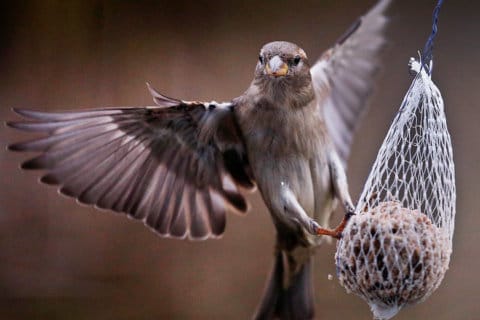Editor’s note: WTOP has brought back this 2018 story that continues to be relevant for this season. Enjoy!
Don in Columbia, Maryland, describes his town as one “where it’s frowned upon to shoot, stab or otherwise eliminate any of the deer that roam freely around our planned community in search of tasty flowers, fruit and veggies from gardens like mine.”
He continues: “I’m at my wit’s end. Hyperactive young bucks recently used my mature blueberry bushes as sandpaper for their antlers, effectively chopping off half of the plants — blueberry bushes I thought were protected by a motion-activated sprinkler.”
Motion-activated sprinklers are a great deer deterrent, Don — but not in the winter, when they can freeze up. (Although that wasn’t Don’s problem this time — read on to learn more.)
Try replacing the sprinkler over the winter with Wireless Deer Fence, a clever device that works no matter the weather.
The wireless deer fence: A shocking solution
Don in Columbia, Maryland, thought that his blueberry plants were protected by a motion-activated sprinkler, but it turns out that the battery that powers the device was dead.
But sprinklers also freeze in winter, making them a bad seasonal choice — especially with the bouts of cold we’ve already had to battle. It’s time for Don to switch to an all-season device: the Wireless Deer Fence.
Sold in packs of three direct from the inventor for $60 “plus exact shipping,” the “fence” is actually a plastic stake with a metal cage on top. You place a scent pellet (dozens are included) designed to attract deer inside each metal cage, install two AA batteries (not included) inside each waterproof stake and place a stake in front of each planting you wish to protect.
The deer are drawn to the scent from the pellet, lick the cage, get a shock and run away — often for good.
Yes, for good. Devices like this, motion-activated sprinklers and true electric fences are designed to give deer an unpleasant but nonlethal experience at your place and send them off to eat the neighbors’ azaleas.
Hey, what about Don’s poor plants?
Young deer “velveting” the furry covering off their newly emerged antlers did a real job on a couple of blueberry bushes in the garden of Don in Columbia, Maryland. (His first thought? “How did they get past the freezing cold water from my motion-activated sprinkler? Easy,” he wrote. “The 9-volt battery inside the sprinkler had died the night before.”)
He continues: “Have the deer killed my blueberries? Should I rip them out of the ground and start with new plants next spring? Or might they be resurrected?”
There’s no point in pulling them out now, Don. Wait until spring. If a good amount of new growth appears, give the plants a gentle feeding with a natural fertilizer designed for acid-loving plants, like Holly-Tone. (Cover this and all other granulated fertilizers with a bit of compost or soil to give it a kick-start.)
However, if the poor plants remain really most sincerely dead, pull ‘em out and replant — with protection!
‘Velveting’ requires a special type of protection
As Don in Columbia, Maryland, recently learned, deer don’t need to actually eat your plants to pulverize them.
Young male deer “velveting” the fuzzy covering off their newly emerged antlers can also do a lot of damage — and you can’t depend on deer repellents to deter them because they’re rubbing, not dining.
The best answer is a protective cage made of simple welded wire; just make a loose (but sturdily staked) circle around the plant or plants. Don’t make it tight; deer won’t want to get tangled up in the wire and will quickly move on once they feel the wire’s weirdness.
This is also a good time of year to protect trees and shrubs — especially tasty young ones — from nibblers down low. Rake away any mulch touching the tree (volcano mulching is a vole’s best friend) and wrap hardware cloth around the base to deter mice, voles and wascally wabbits.
Last-minute gifts for gardeners
- Either of the two deer deterrents mentioned above: motion-activated sprinklers for non-freezing times and the Wireless Deer Fence for the winter.
- Baseball batting gloves. Sporting goods stores should still have them available, and their tight, adjustable fit and thin-but-sturdy protection makes them the absolute best garden gloves. They’re also inexpensive, so you can buy several pair and look like a big shot.
- A pair of high-quality pruners. Independent garden centers have these on display right now and no gardener ever has too many pruners — especially if they’re newly sharp and ergonomically easy on the hands. I especially like the Fiskars brand. They’re very well-made.
- If they’re still flat-earth gardeners, find a kit with the frames and hardware to make an easy-peasy raised bed. (I’ve seen these in both independent garden centers and big box stores.) Four by four feet is a popular size for beginners. Once they grow in one raised bed, they’ll never go back.
Bad ideas: mugs, T-shirts, sweatshirts, posters, flags or anything else that says something like “I garden therefore I am” or “Plays in the dirt.” We got those already. Lots of ‘em.







